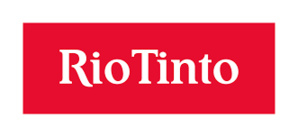Alleging that the value of coal assets in Mozambique had been inflated and concealed critical information while tapping the market for billions of dollars, the U.S. Securities and Exchange Commission on Tuesday charged mining company Rio Tinto Plc and two of its former top executives with fraud.
Accounting standards and company policies were failed to be followed which prevented the company from accurately valuing and recording the assets by former Chief Financial Officer Guy Elliott and Rio Tinto, former Chief Executive Officer Thomas Albanese, said the SEC in a lawsuit filed in U.S. federal court in Manhattan.
The Mozambican coal business was sold for $50 million by Rio Tinto after the company had acquired it for $3.7 billion in 2011 from Riversdale Mining.
The time line for the alleged fraud against one of the largest mining companies in the world are as follows:
For the development of coal projects in Mozambique, Australia’s Riversdale Mining signed a joint venture deal with India’s Tata Steel in 2007. Prices of thermal coal futures rose above $200 per tonne in 2008.
In the country’s northwest, green light to build $800 million coal mine was given to Riversdale in 2010. Some of the lowest-cost coking coal in the world would be produced at the Benga project, Riversdale had predicted at that time. Compared to competing supplies, especially from neighboring South Africa, Mozambique’s coal was costlier, it later turned out. Mozambique will use the Zambezi river to enable inland coal assets to get to a port, which has yet to be fully developed, says Mozambique’s transport ministry in the same year.
Amid expectations that demand from India and China will result in an undersupplied market for decades to come, coal prices soar back as high as $130 per tonne in 2011 after a price crash following the global financial crisis. As part of $3.7 billion acquisition of Riversdale Mining, Rio Tinto got Mozambique coal assets that very same year. The Mozambique operations were described as the “greatest undeveloped seaborne coking coal region in the world” in 2011 by Rio Tinto’s chief executive for energy Doug Ritchie.
With a 500 million British pound tranche, Rio issued a $3 billion bond and an around 1.8 billion euro bond in 2012. Including fund managers, insurers and pension funds, some 95 percent of the sterling bonds went to UK investors. In the same year, transportation of coal to the Indian Ocean for export would not be allowed to Rio Tinto and the company was not allowed to use the Zambezi River by Mozambique’s government. That meant that unreliable railways, which also lack the capacity to handle the coal, was the only way that coal could be transported to ports. To handle large-scale coal exports, the ports were also not sufficiently developed.
Coal prices drop back below $100 per tonne in 2013. This resulted in about $3.5 billion on the operation being written off by Rio Tinto in the very same year. Also, at request of board, Albanese resigned in 2013. Mozambique coal assets were ultimately sold for $50 million by Rio Tinto in 2014. In the Indian mining company Vedanta Resources Plc, Albanese was named chief executive in 2014, where he continued to serve until September 2017.
Charges of fraud against Rio Tinto, along with Albanese and Elliott, were levelled by the U.S. Securities and Exchange Commission in 2017. There is no truth in any of the charges, Albanese said in a statement following the allegations. According to a spokeswoman for the former executive, Elliot will vigorously contest the charges. Rio Tinto says it will defend itself vigorously against the SEC’s allegations.
(Source:www.reuters.com)
Accounting standards and company policies were failed to be followed which prevented the company from accurately valuing and recording the assets by former Chief Financial Officer Guy Elliott and Rio Tinto, former Chief Executive Officer Thomas Albanese, said the SEC in a lawsuit filed in U.S. federal court in Manhattan.
The Mozambican coal business was sold for $50 million by Rio Tinto after the company had acquired it for $3.7 billion in 2011 from Riversdale Mining.
The time line for the alleged fraud against one of the largest mining companies in the world are as follows:
For the development of coal projects in Mozambique, Australia’s Riversdale Mining signed a joint venture deal with India’s Tata Steel in 2007. Prices of thermal coal futures rose above $200 per tonne in 2008.
In the country’s northwest, green light to build $800 million coal mine was given to Riversdale in 2010. Some of the lowest-cost coking coal in the world would be produced at the Benga project, Riversdale had predicted at that time. Compared to competing supplies, especially from neighboring South Africa, Mozambique’s coal was costlier, it later turned out. Mozambique will use the Zambezi river to enable inland coal assets to get to a port, which has yet to be fully developed, says Mozambique’s transport ministry in the same year.
Amid expectations that demand from India and China will result in an undersupplied market for decades to come, coal prices soar back as high as $130 per tonne in 2011 after a price crash following the global financial crisis. As part of $3.7 billion acquisition of Riversdale Mining, Rio Tinto got Mozambique coal assets that very same year. The Mozambique operations were described as the “greatest undeveloped seaborne coking coal region in the world” in 2011 by Rio Tinto’s chief executive for energy Doug Ritchie.
With a 500 million British pound tranche, Rio issued a $3 billion bond and an around 1.8 billion euro bond in 2012. Including fund managers, insurers and pension funds, some 95 percent of the sterling bonds went to UK investors. In the same year, transportation of coal to the Indian Ocean for export would not be allowed to Rio Tinto and the company was not allowed to use the Zambezi River by Mozambique’s government. That meant that unreliable railways, which also lack the capacity to handle the coal, was the only way that coal could be transported to ports. To handle large-scale coal exports, the ports were also not sufficiently developed.
Coal prices drop back below $100 per tonne in 2013. This resulted in about $3.5 billion on the operation being written off by Rio Tinto in the very same year. Also, at request of board, Albanese resigned in 2013. Mozambique coal assets were ultimately sold for $50 million by Rio Tinto in 2014. In the Indian mining company Vedanta Resources Plc, Albanese was named chief executive in 2014, where he continued to serve until September 2017.
Charges of fraud against Rio Tinto, along with Albanese and Elliott, were levelled by the U.S. Securities and Exchange Commission in 2017. There is no truth in any of the charges, Albanese said in a statement following the allegations. According to a spokeswoman for the former executive, Elliot will vigorously contest the charges. Rio Tinto says it will defend itself vigorously against the SEC’s allegations.
(Source:www.reuters.com)






